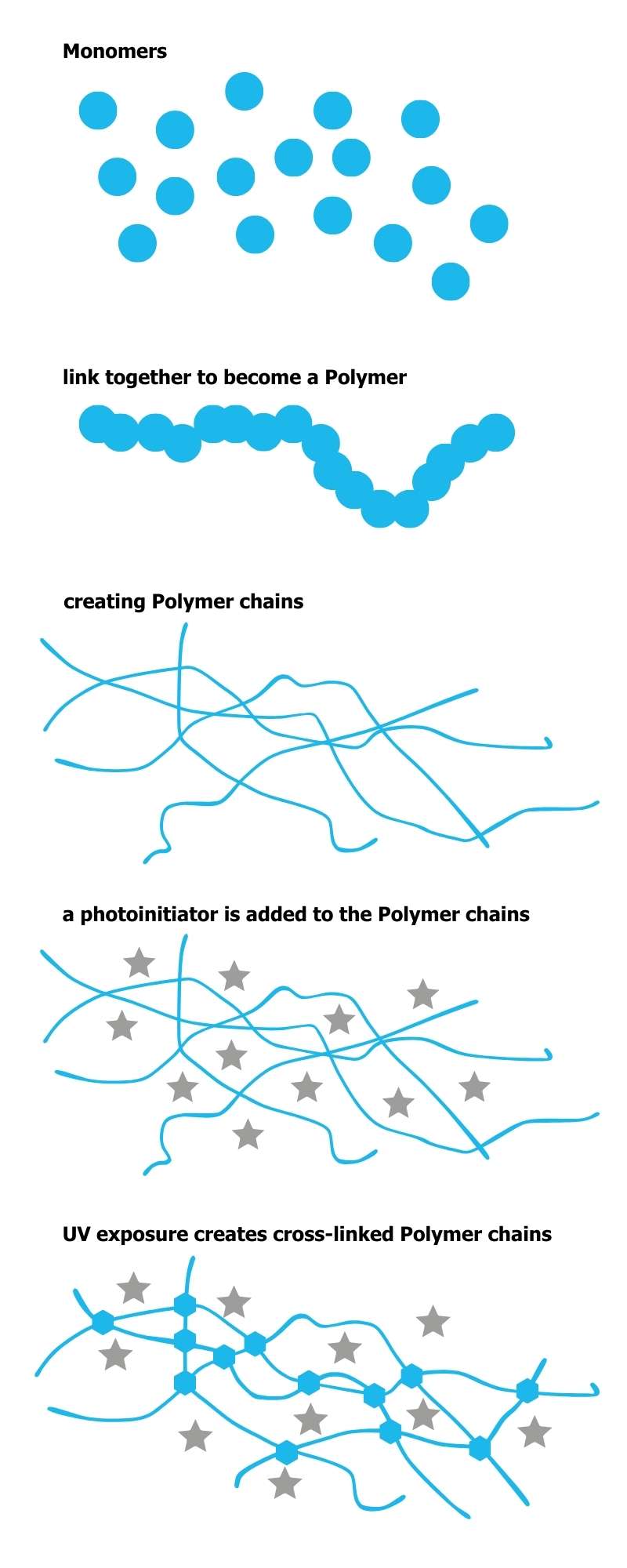The use of ultraviolet (UV) light to help speed up and improve the effectiveness of curing processes is a worldwide industrial practice that in the last 40 years has become common across many applications from printing to furniture making.
In this series of ‘How it works’ blogs, we are taking a look at the main uses of UV curing and recognising how this process helps improve everyday life for almost everyone in the modern world.
Since Alpha-Cure’s foundation over 26 years ago, our business has been to manufacture the best UV lamps on the market. Matching production knowledge and expertise with the highest quality materials to create UV lamps used in OEM systems and as replacement lamps around the world.
A short history of UV
The use of ultraviolet light as a curing process has essentially been in commercial use since the 1970s. The usefulness of UV light can be traced back to the late 1800s / early 1900s when it was discovered that light in the UV spectrum could help neutralise bacteria leading it to be used in sterilising operating rooms as well as disinfection of water and other surfaces. (For more on this visit our sister brand www.alpha-purify.com).
The use of UV as a curing process started in the 1960s but started to really gain commercial prominence in the 1980s through rapid advances in chemical and equipment technology. Industries realised that by using UV curing it could substantially increase production capacities and speed to market, which led to a growth of use in applications as diverse as ink drying, coating and finishing, and bonding and assembling.
 How does UV curing work for printing?
How does UV curing work for printing?
One of the main uses of UV curing is in the print industry. When printing onto any surface there is always the need to ‘cure’ the ink. That is to dry out the ink so it sticks to the surface of what it has been printed on.
Historically this was done through the application of thermal drying which generated chemical changes through the evaporation of the carrier (water, solvent, or alcohol). This was typically a slow process, reliant on the amount of heat and the reaction of the type of chemicals used in the ink.
When scientists and engineers worked on understanding the UV light spectrum it became apparent that exposure to UV light wavelengths resulted in photochemical reactions. These reactions created crossed-linked polymers (hardened monomers) in the element that was exposed to the UV light source.
This led to the development of how to trigger polymerisation in the curing process. To get polymerisation to occur in printing ink it requires adding a photoinitiator to the ink. The photoinitiator absorbs UV light and undergoes polymerisation, effectively hardening or ‘drying’ the ink element. The ink compound itself remains unaffected and so retains its full colour and effects but has essentially been instantly dried onto the substrate it has been printed onto.
UV creates real benefits
The UV curing process has enabled printers to:
- Substantially increase production and turnaround speeds
- Reduce reprint rates (through less ink-drying problems)
- Reduce the amount of ink used
- Improve the quality and depth of the finished colours
- Produce more consistent and better-quality images
- Introduce new types of finishes e.g. metallic printing, gloss, 3D
- Improve the bonding strength of the ink to the substrate
- Increase scratch resistance
- Reduce the overall amount of energy required in the process to cure ink
UV opens up new applications
As described above, UV curing dries the ink but doesn’t let it absorb, etch or scratch into the substrate material. This means printers can now print on a huge range of materials. Such as paper (of course), wood, glass, ceramics, plastics, canvas and leather.
The type of printing systems that UV can be used in is also very broad, including off-set, flatbed, roll fed, narrow/mid/wide format, central impression, corrugated flexo/spot/gloss and office and personal inkjet printers.
The worldwide adoption of UV curing in the print process means that almost everything we read or touch could have undergone UV curing. From books to food cans, business cards to brochures, outside advertising posters to car decals, golf balls to office signage, all can be produced quickly and of a higher quality than ever before.
If you’d like to find out why printers around the world, choose to use Alpha-Cure UV lamps in their print systems please get in touch with our sales team who are ready to help.
Latest Articles
A Busy Year! Alpha-Cure’s 2025 Year in Review
A Year of Global Reach and Innovation for Alpha-Cure As 2025 draws to a close, we’re reflectin...
View ArticleAvoid Holiday Disruption: Key Order Deadlines for Year End Delivery
As we approach the end of the year, production schedules get tighter and distribution channels come ...
View ArticleAll UV Lamps. One Standard: How Alpha-Cure Scaled UK Excellence Globally
When Alpha-Cure expanded our manufacturing footprint to China, it wasn’t about lowering costs, it ...
View ArticleIndustry Focus – Helping Open New Markets for UV Technology
A guide to support local distributor growth At Alpha-Cure, we’re proud of the strong presence ...
View Article